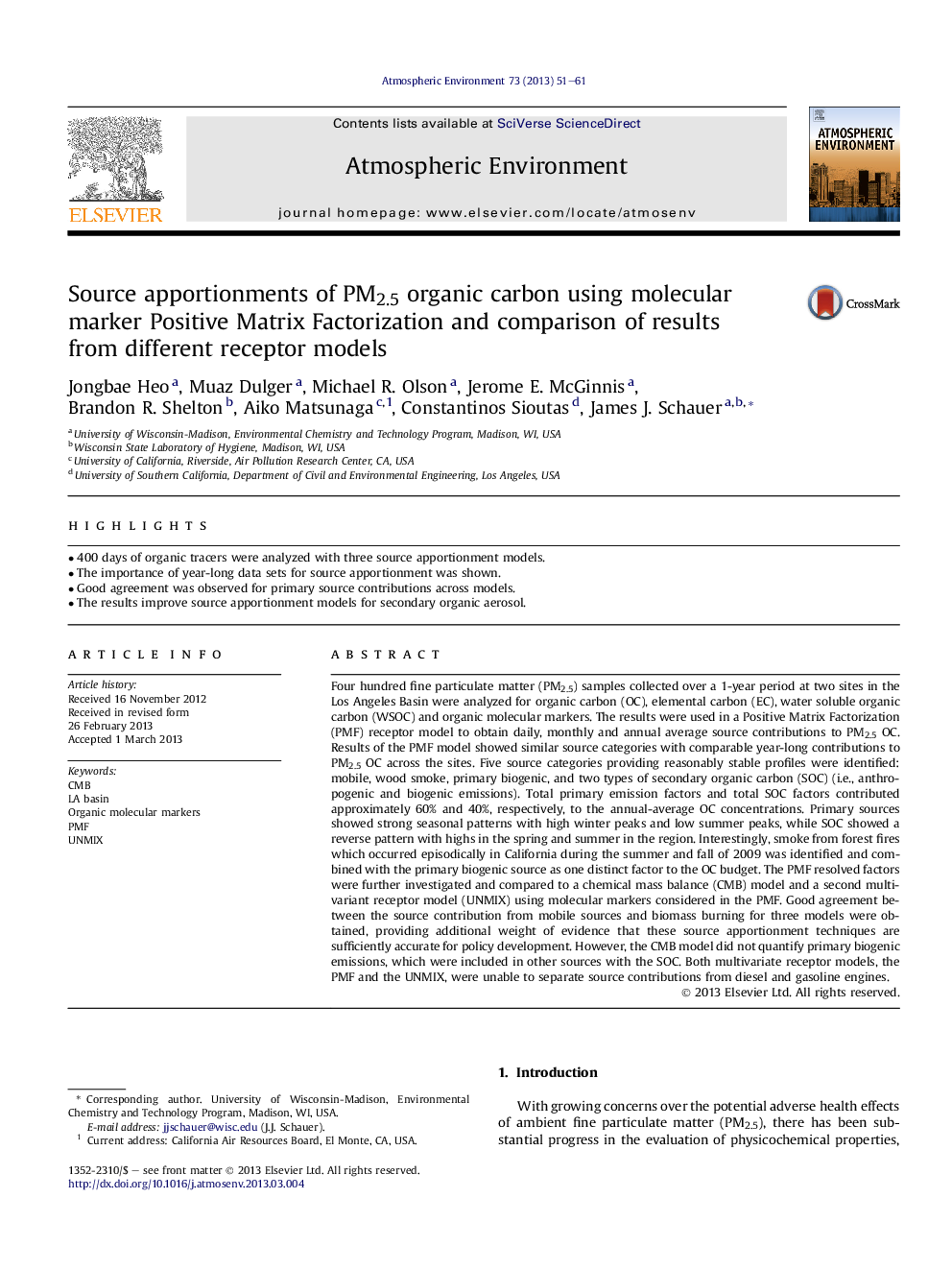| کد مقاله | کد نشریه | سال انتشار | مقاله انگلیسی | نسخه تمام متن |
|---|---|---|---|---|
| 4438221 | 1620398 | 2013 | 11 صفحه PDF | دانلود رایگان |

• 400 days of organic tracers were analyzed with three source apportionment models.
• The importance of year-long data sets for source apportionment was shown.
• Good agreement was observed for primary source contributions across models.
• The results improve source apportionment models for secondary organic aerosol.
Four hundred fine particulate matter (PM2.5) samples collected over a 1-year period at two sites in the Los Angeles Basin were analyzed for organic carbon (OC), elemental carbon (EC), water soluble organic carbon (WSOC) and organic molecular markers. The results were used in a Positive Matrix Factorization (PMF) receptor model to obtain daily, monthly and annual average source contributions to PM2.5 OC. Results of the PMF model showed similar source categories with comparable year-long contributions to PM2.5 OC across the sites. Five source categories providing reasonably stable profiles were identified: mobile, wood smoke, primary biogenic, and two types of secondary organic carbon (SOC) (i.e., anthropogenic and biogenic emissions). Total primary emission factors and total SOC factors contributed approximately 60% and 40%, respectively, to the annual-average OC concentrations. Primary sources showed strong seasonal patterns with high winter peaks and low summer peaks, while SOC showed a reverse pattern with highs in the spring and summer in the region. Interestingly, smoke from forest fires which occurred episodically in California during the summer and fall of 2009 was identified and combined with the primary biogenic source as one distinct factor to the OC budget. The PMF resolved factors were further investigated and compared to a chemical mass balance (CMB) model and a second multi-variant receptor model (UNMIX) using molecular markers considered in the PMF. Good agreement between the source contribution from mobile sources and biomass burning for three models were obtained, providing additional weight of evidence that these source apportionment techniques are sufficiently accurate for policy development. However, the CMB model did not quantify primary biogenic emissions, which were included in other sources with the SOC. Both multivariate receptor models, the PMF and the UNMIX, were unable to separate source contributions from diesel and gasoline engines.
Journal: Atmospheric Environment - Volume 73, July 2013, Pages 51–61